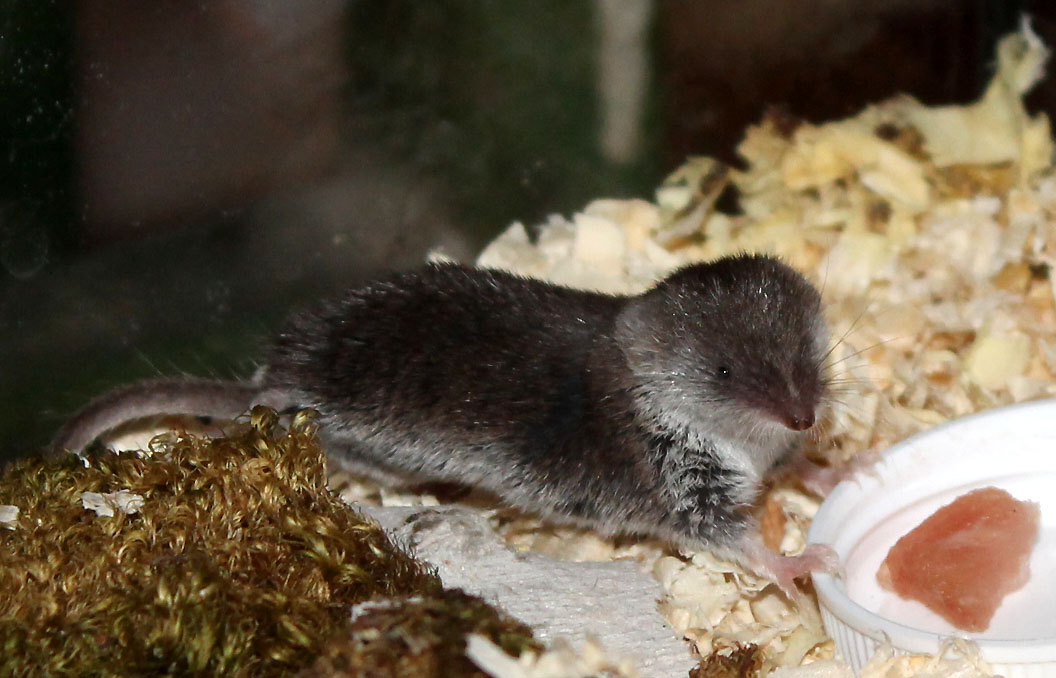
Specialists from the Institute of Ecology and Evolution of the Russian Academy of Sciences, with the help of colleagues from the Faculty of Biology of Moscow State University have developed a reliable method for identifying current sources of environmental pollution with super-ecotoxicants such as dioxins, based on the use of the biological characteristics of insectivorous and rodent species, including those inhabiting biotopes polluted by humans.
Dioxins - polychlorinated dibenzo-para-dioxins and dibenzofurans (PCDD/F) and dioxin-like polychlorinated biphenyls (PCBs) - persistent organic pollutants, identifying the sources of their emission, which can be, for example, unequipped waste storage facilities, is a labor-intensive and expensive, but necessary environment protection task. Its implementation is complicated, firstly, by the many ways in which these pollutants spread from potential sources - through water, soil, air, and secondly, by their background presence due to pollution in previous periods and/or global transfer from distant places.
Unique forest animals can help in solving this problem - insectivorous shrews, representatives of the genus Sorex (order Eulipotyphla, family Soricidae) - common (S. araneus, L. 1758), and small (S. minutus, L. 1766). These shrews are the most common inhabitants of forest biocenoses throughout the European territory, the common shrew is the most numerous, the small one (pictured) is the second most numerous species; In the forests and forest parks of Moscow and the region, one or two representatives of the second species fall into live traps for every ten of the first species. The common shrew is slightly larger, the body length of its adults is about 8 cm, the small one is about 6 cm, the weight of the first reaches 13, the second - no more than 7 g. Both have a dark back and a lighter belly, the small one has a relatively thick tail at the base (photo). In the small karyotype there are 42 chromosomes, and in the ordinary karyotype there can be from 20 to 33 chromosomes due to different combinations of fusion of the chromosome arms of 12 autosomes - the so-called variable part of the karyotype, which made this species a model object for population genetic studies. These small predators are unique in that per day they hunt and eat twice their own weight, mainly invertebrates, but also all other animal food available to them - carrion and young mouse-like rodents, small amphibians. Plant food is used in small quantities, mainly in winter. Differences in diet: the common shrew is the main consumer of soil insects, the small shrew prefers terrestrial ones.
It turned out that samples from individuals of these species can serve as the best indicator of environmental pollution with dioxin-like ecotoxicants. The fact is that the toxicity of these substances for biota and humans is associated with their ability to bioaccumulate and interfere, even in trace quantities, with the vital processes of the body; accordingly, their content is most significant in the tissues of wild-living small mammals. The feeding method of shrews and the composition of the feed they use determines the maximum accumulation of dioxins in the body, and reflects the entry of pollutants through the filtrate produced by their emission sources, along the way - groundwater, soil, soil insects, and predators. Using in the study, in addition to an insectivorous species, a representative of a taxon with a different type of diet, a herbivorous rodent, makes it possible to better reflect the deposition of pollutants on the green parts of plants due to airborne transport. The combination of insectivorous and herbivorous species in biomonitoring takes into account the different ways in which ecotoxicants enter the mammalian body and represents an integral indicator of environmental pollution.
To differentiate background pollution and the contribution of the source, sampling should be carried out close to and at a significant distance (10-50 km) from it, to completely exclude its influence. The excess of the concentrations of ecotoxicants in samples of individuals caught near the object under study over the background values obtained when they were caught at a distance, in a conditionally clean area, indicates the influence of the source. The determination of PCDD/Fs and PCBs is carried out, after appropriate sample preparation, by high-resolution gas chromatography-mass spectrometry.
As an example, we present a study of a total of 8 samples - two individuals of each species (the insectivorous common shrew S. araneus and the herbivorous bank vole Cl. glareolus), captured in two locations in the Moscow region - near a potential local source of ecotoxicant emissions (landfill) and at a distance of about 50 km from it, in a natural reserve (Zvenigorod Biological Station named after S.N. Skadovsky, ZBS MSU).
In all samples of the bank vole and the common shrew, dioxins were found, and the values of the total equivalent of their toxicity (WHO-TEQ2005) in the shrew samples were more than 10 times higher than those in the vole samples (Table), which apparently reflected the different composition of the feed of these species.

The dioxin content in samples of animals caught near the landfill for both species was almost three times higher than background values, which indicates the contribution of this source to environmental pollution, while the excess concentrations in shrew samples primarily indicate water (filtrate-groundwater, soil insects), and the green-eating bank vole on the airborne (deposition on green parts of plants) path of pollutant spread. The shrew proved to be the best indicator for detecting the emission of these ecotoxicants.
The proposed method, based on the combination of biomonitoring of herbivorous and insectivorous species of small mammals from two locations, made it possible, with a minimum number of samples, to obtain a reliable gradient of dioxin concentration values in samples, not only to detect the contribution of a local source, but to indicate the distribution paths of these pollutants, which provides the necessary information when analyzing the state of ecosystems and assessing environmental risks. (Euthanasia of animals was carried out humanely in accordance with the requirements of Article 6 and Annex IV of Directive 2010/63/EU.)

